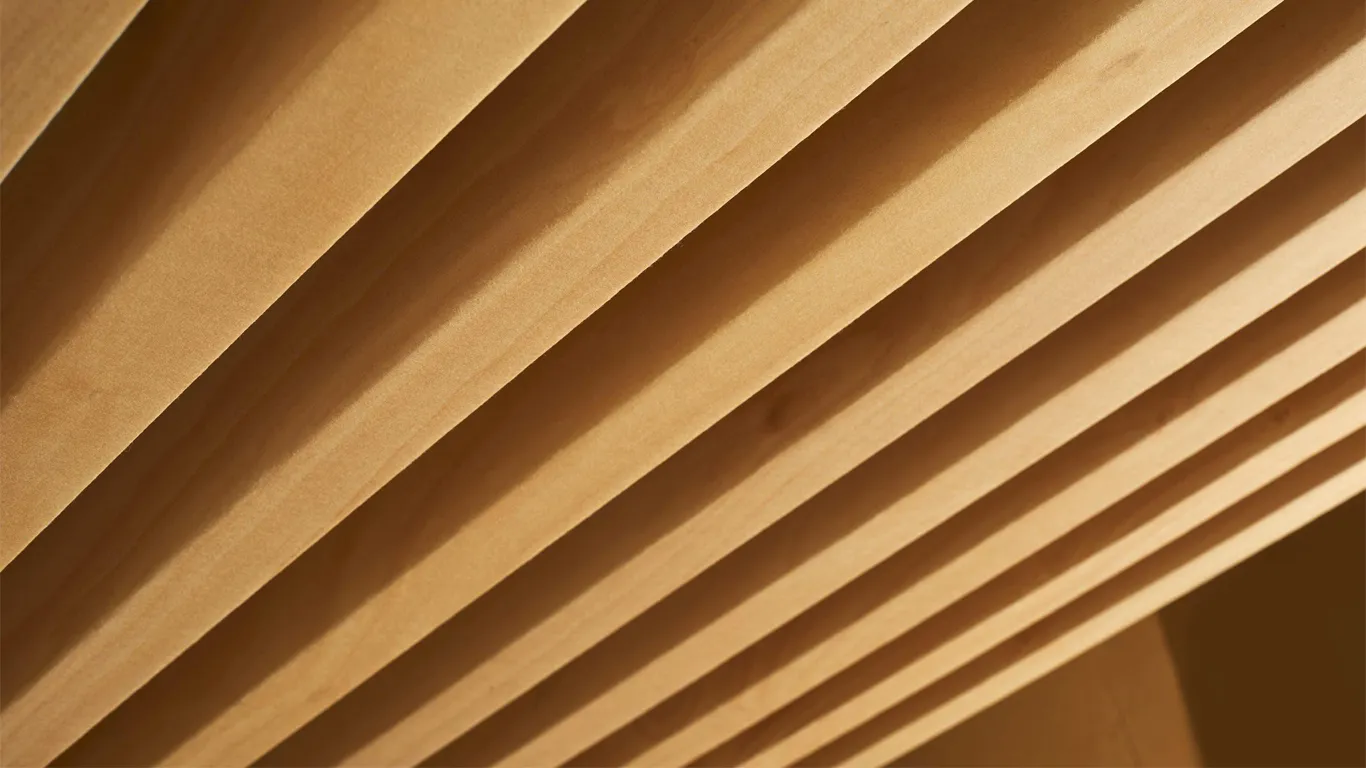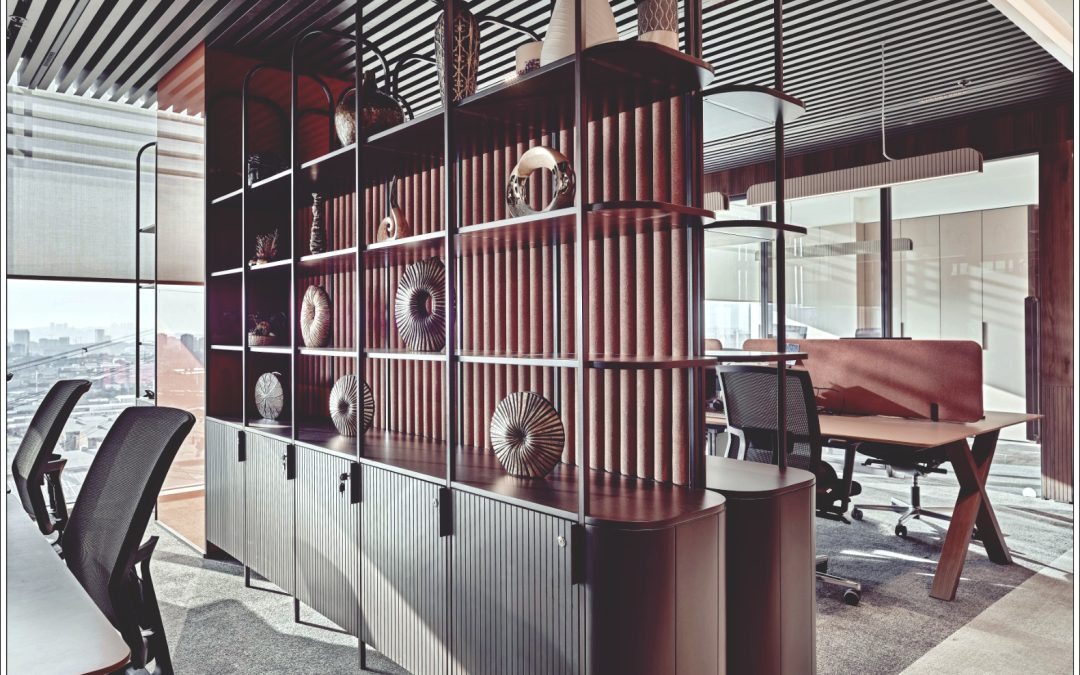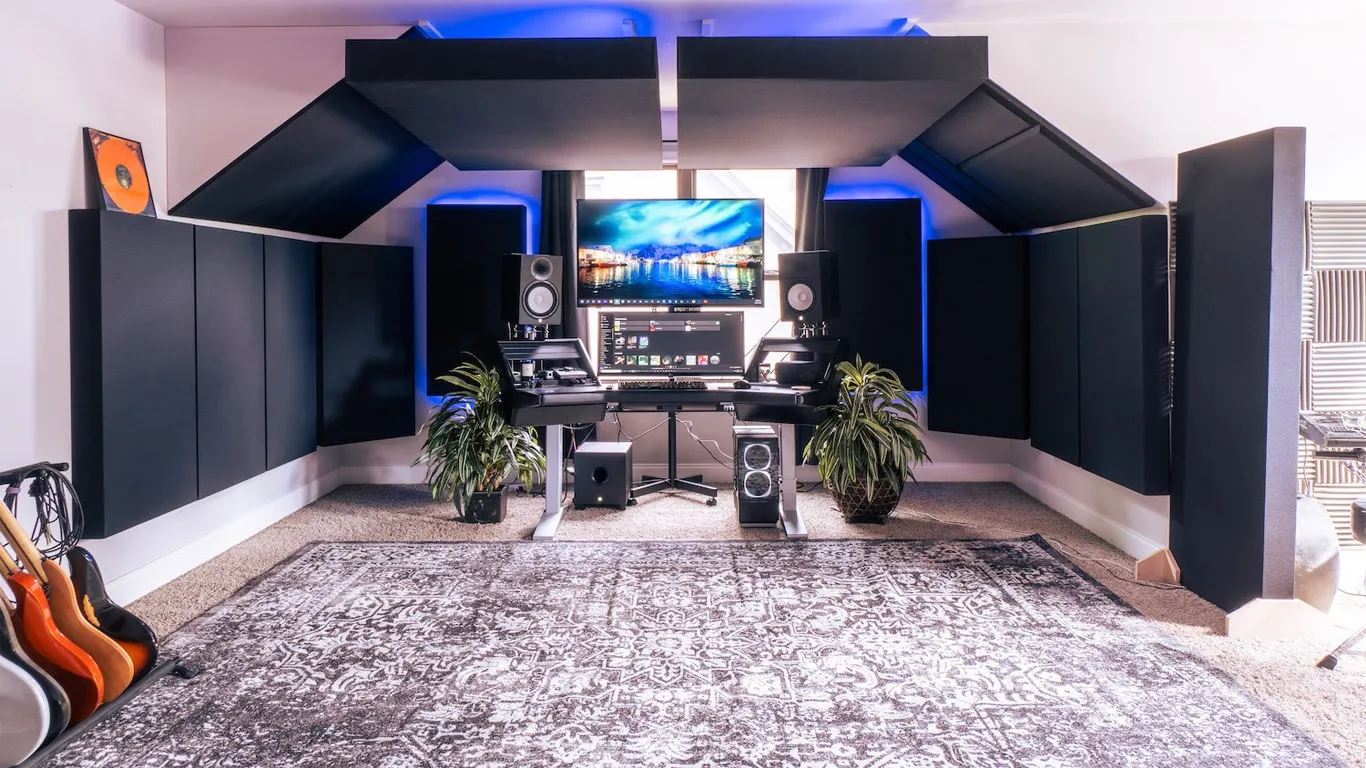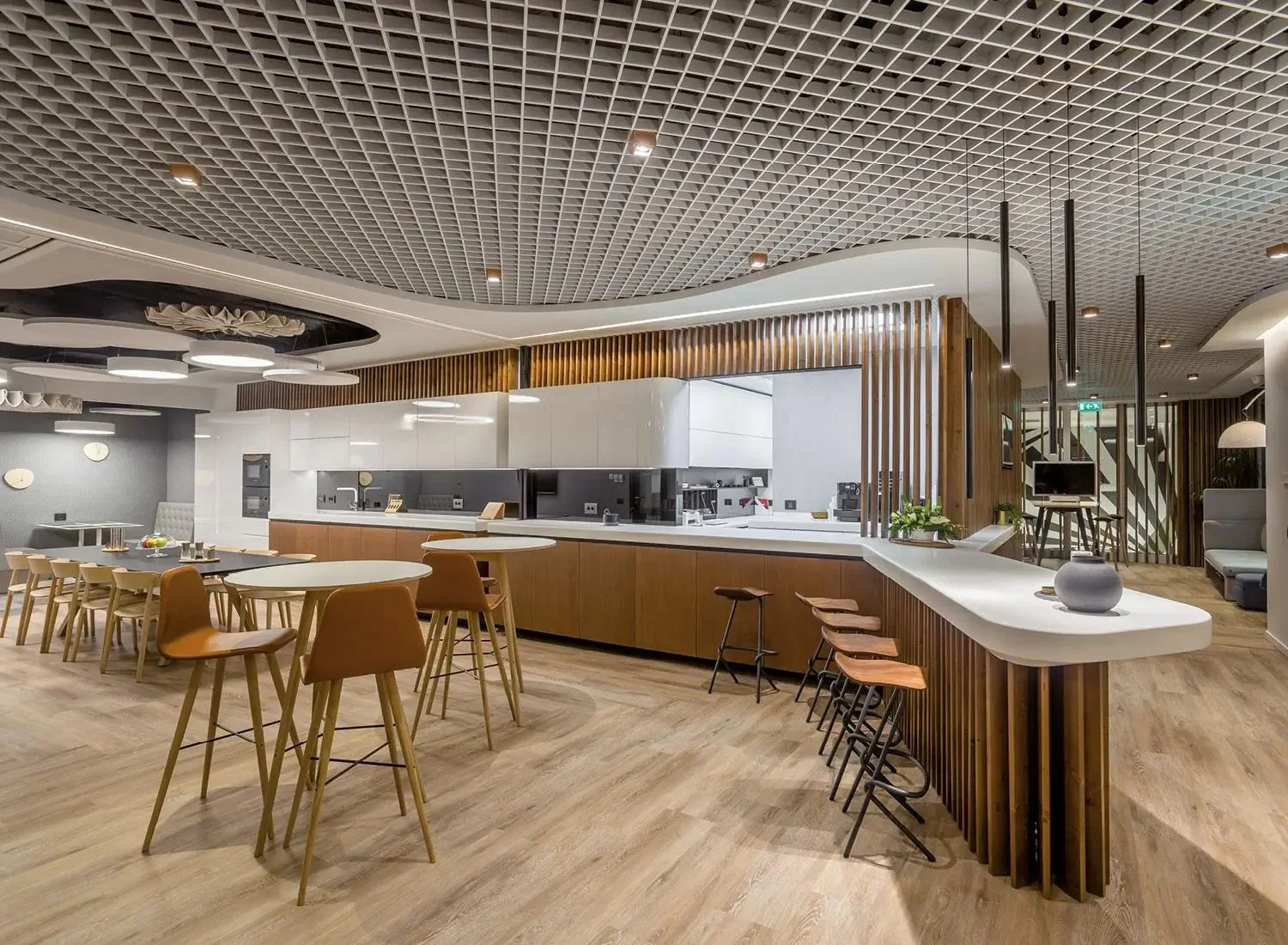Timber baffles are vertical or horizontal slats made from wood or wood-like materials, designed to be suspended from ceilings or mounted on walls. These slats are primarily used for both aesthetic and acoustic purposes, offering an elegant way to improve the appearance and sound quality of interior spaces. Timber baffles are often seen in modern architectural designs in commercial, educational, and residential settings, where they provide a blend of natural beauty and functional benefits.
Timber baffles are a highly versatile and aesthetically pleasing solution for both acoustic and design needs in a wide range of spaces. Their natural beauty, customizable options, and acoustic benefits make them a popular choice in modern architecture. Whether you are looking to enhance the sound quality of a room or add a decorative touch to an interior, timber baffles provide a perfect balance of function and style. At Harlie Harper, we offer premium timber baffle solutions to suit the unique needs of your project, ensuring both aesthetic appeal and acoustic performance.
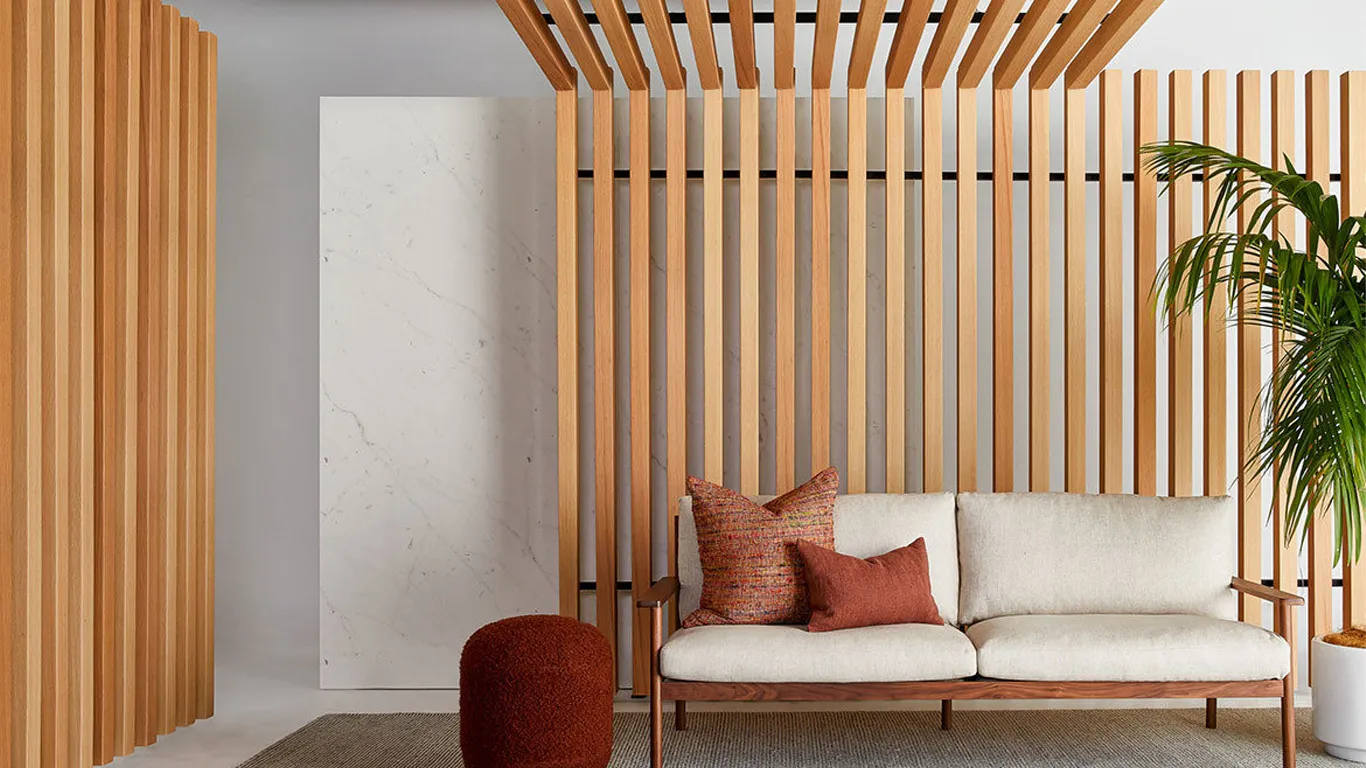
Key Features of Timber Baffles
- Acoustic Performance:
- One of the main advantages of timber baffles is their ability to improve acoustics by absorbing sound. They help reduce noise and reverberation, making spaces more comfortable and improving sound clarity. This is especially useful in environments like offices, auditoriums, and classrooms, where controlling sound levels is critical.
- Aesthetic Appeal:
- Timber baffles add a natural, warm, and visually striking element to any interior. Their linear, slatted design creates a sense of depth and texture, making them a popular choice for contemporary and minimalist designs. Timber baffles can be made from various types of wood, such as oak, walnut, or pine, and are available in a wide range of finishes to suit different aesthetic preferences.
- Versatility:
- Timber baffles are incredibly versatile and can be installed in a variety of configurations. They can be arranged in horizontal or vertical patterns, with customizable spacing between the slats to achieve the desired look and function. These baffles can be mounted to ceilings, walls, or even used as room dividers to create unique interior designs.
- Customizable Design:
- Depending on the project, timber baffles can be fully customized to fit the space. Customization options include selecting the type of wood, finish, color, size, and even the spacing of the baffles. This flexibility makes them suitable for both large-scale commercial projects and more intimate residential spaces.
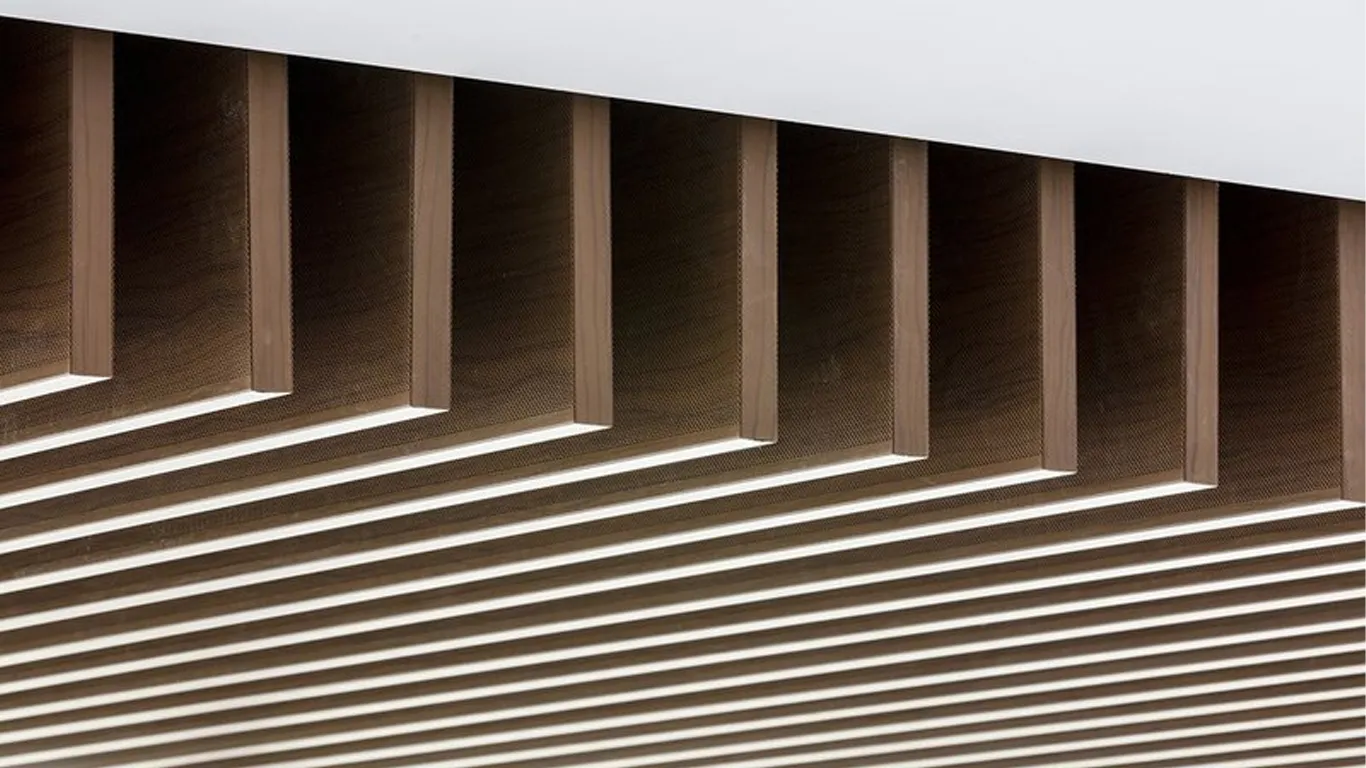
Applications of Timber Baffles
Timber baffles are widely used in various types of spaces for both their acoustic and decorative properties:
- Commercial Spaces:
- Timber baffles are commonly found in offices, lobbies, and conference rooms where managing noise and maintaining a sleek, modern look are key priorities. Their ability to control acoustics while adding a stylish element to ceilings and walls makes them highly popular in corporate environments.
- Educational Institutions:
- In schools, universities, and lecture halls, timber baffles help to reduce noise and improve the clarity of speech. By absorbing excess sound and preventing echo, these baffles create an environment that is conducive to learning and effective communication.
- Public Buildings:
- Museums, galleries, libraries, and theaters often use timber baffles to control acoustics while maintaining a visually appealing interior. The natural wood finish of timber baffles enhances the aesthetic appeal of public spaces while ensuring optimal sound control.
- Residential Spaces:
- In modern homes, timber baffles are used as design features in living rooms, dining areas, or home theaters. They add warmth and texture to interiors while improving sound quality, making them a functional and attractive addition to residential spaces.
- Hospitality and Retail:
- Hotels, restaurants, and retail stores also use timber baffles to create a welcoming and upscale atmosphere. In these spaces, timber baffles not only enhance the acoustics but also serve as a focal point for the overall design.
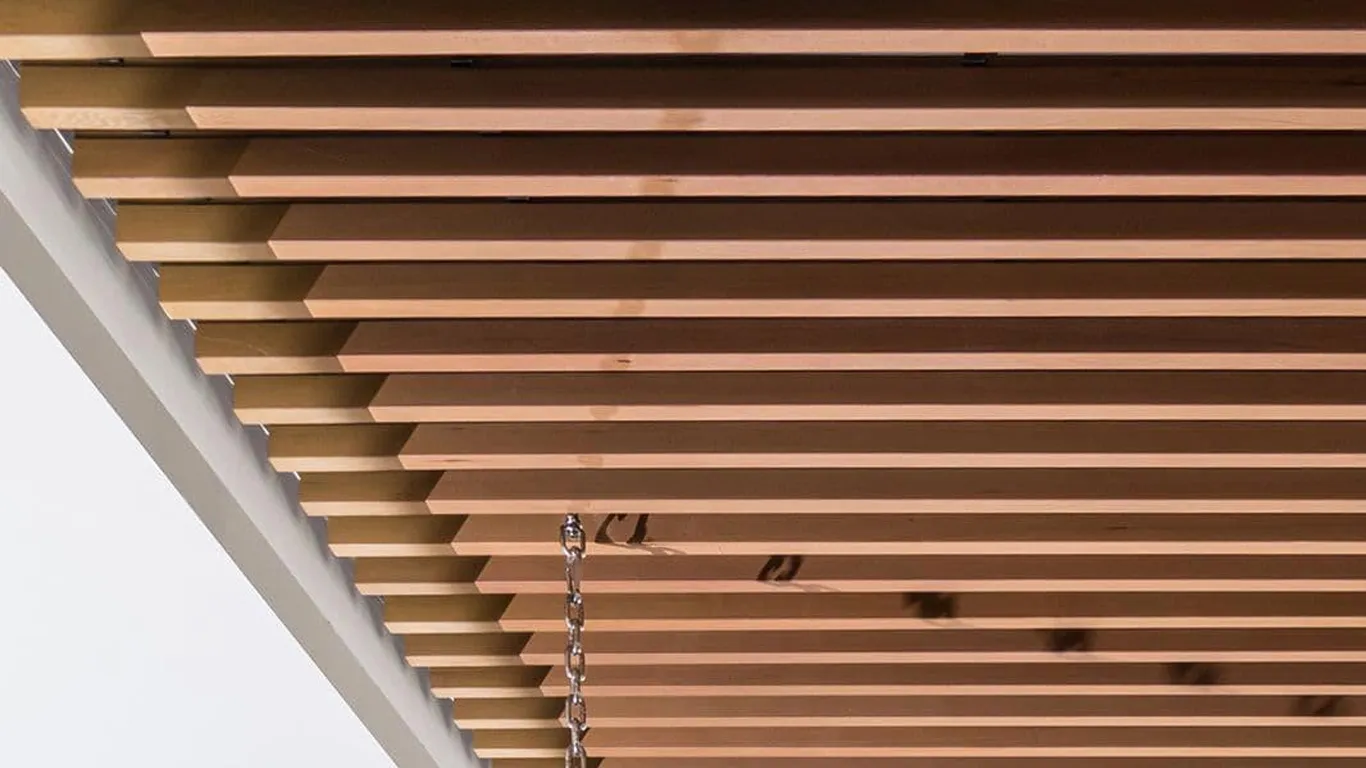
Installation and Maintenance of Timber Baffles
Installation:
Timber baffles are typically installed using a suspension system for ceilings or mounted to walls with appropriate hardware. The installation process involves securing the slats to metal frames or directly to the ceiling or wall surface, depending on the design and application. The installation method should ensure that the baffles are securely anchored while allowing for easy maintenance and adjustments if needed.
Maintenance:
Timber baffles are relatively low-maintenance, but regular care is necessary to keep them in top condition. Depending on the type of finish, they may need to be dusted or cleaned with a mild cleaning solution to remove any dirt or debris. In humid environments, it is essential to monitor the condition of the wood to prevent warping or discoloration.

